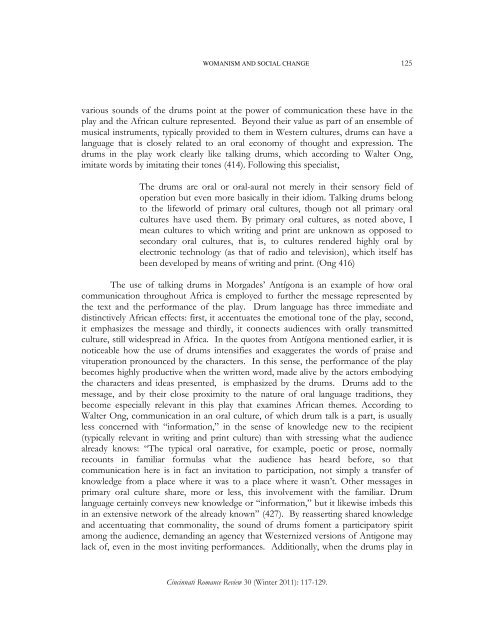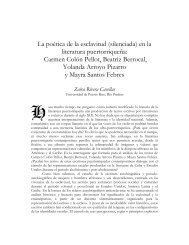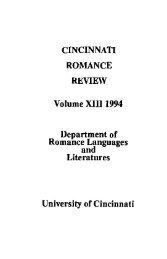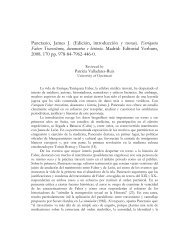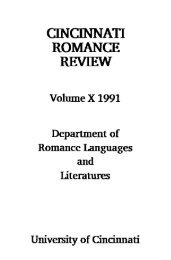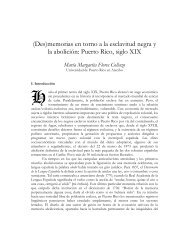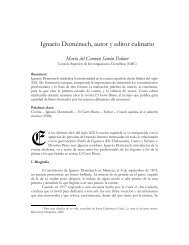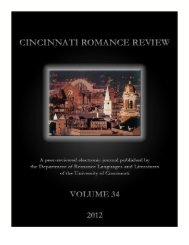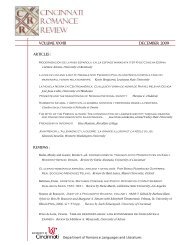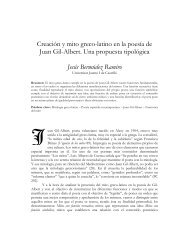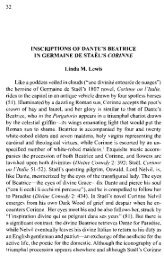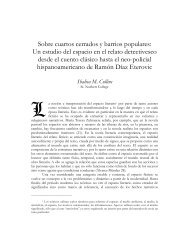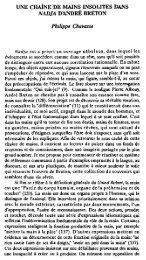Volume 30 (2011) - Cincinnati Romance Review
Volume 30 (2011) - Cincinnati Romance Review
Volume 30 (2011) - Cincinnati Romance Review
You also want an ePaper? Increase the reach of your titles
YUMPU automatically turns print PDFs into web optimized ePapers that Google loves.
WOMANISM AND SOCIAL CHANGE 125<br />
various sounds of the drums point at the power of communication these have in the<br />
play and the African culture represented. Beyond their value as part of an ensemble of<br />
musical instruments, typically provided to them in Western cultures, drums can have a<br />
language that is closely related to an oral economy of thought and expression. The<br />
drums in the play work clearly like talking drums, which according to Walter Ong,<br />
imitate words by imitating their tones (414). Following this specialist,<br />
The drums are oral or oral-aural not merely in their sensory field of<br />
operation but even more basically in their idiom. Talking drums belong<br />
to the lifeworld of primary oral cultures, though not all primary oral<br />
cultures have used them. By primary oral cultures, as noted above, I<br />
mean cultures to which writing and print are unknown as opposed to<br />
secondary oral cultures, that is, to cultures rendered highly oral by<br />
electronic technology (as that of radio and television), which itself has<br />
been developed by means of writing and print. (Ong 416)<br />
The use of talking drums in Morgades’ Antígona is an example of how oral<br />
communication throughout Africa is employed to further the message represented by<br />
the text and the performance of the play. Drum language has three immediate and<br />
distinctively African effects: first, it accentuates the emotional tone of the play, second,<br />
it emphasizes the message and thirdly, it connects audiences with orally transmitted<br />
culture, still widespread in Africa. In the quotes from Antígona mentioned earlier, it is<br />
noticeable how the use of drums intensifies and exaggerates the words of praise and<br />
vituperation pronounced by the characters. In this sense, the performance of the play<br />
becomes highly productive when the written word, made alive by the actors embodying<br />
the characters and ideas presented, is emphasized by the drums. Drums add to the<br />
message, and by their close proximity to the nature of oral language traditions, they<br />
become especially relevant in this play that examines African themes. According to<br />
Walter Ong, communication in an oral culture, of which drum talk is a part, is usually<br />
less concerned with “information,” in the sense of knowledge new to the recipient<br />
(typically relevant in writing and print culture) than with stressing what the audience<br />
already knows: “The typical oral narrative, for example, poetic or prose, normally<br />
recounts in familiar formulas what the audience has heard before, so that<br />
communication here is in fact an invitation to participation, not simply a transfer of<br />
knowledge from a place where it was to a place where it wasn’t. Other messages in<br />
primary oral culture share, more or less, this involvement with the familiar. Drum<br />
language certainly conveys new knowledge or “information,” but it likewise imbeds this<br />
in an extensive network of the already known” (427). By reasserting shared knowledge<br />
and accentuating that commonality, the sound of drums foment a participatory spirit<br />
among the audience, demanding an agency that Westernized versions of Antigone may<br />
lack of, even in the most inviting performances. Additionally, when the drums play in<br />
<strong>Cincinnati</strong> <strong>Romance</strong> <strong>Review</strong> <strong>30</strong> (Winter <strong>2011</strong>): 117-129.


